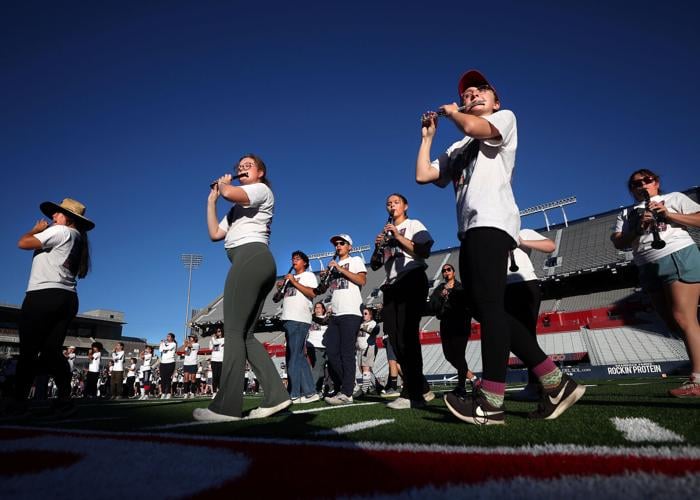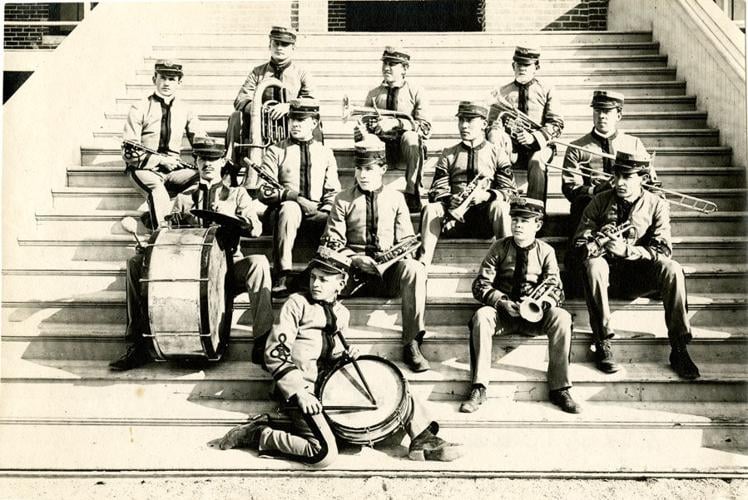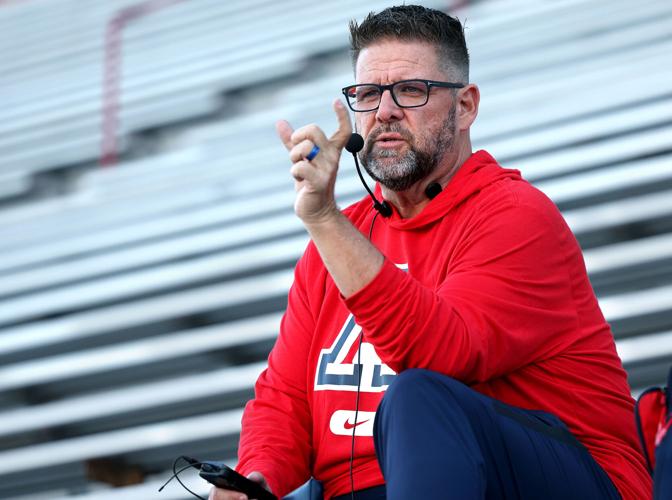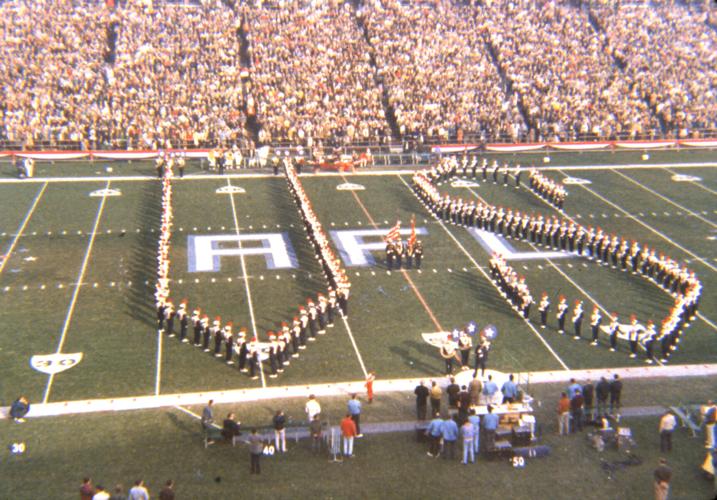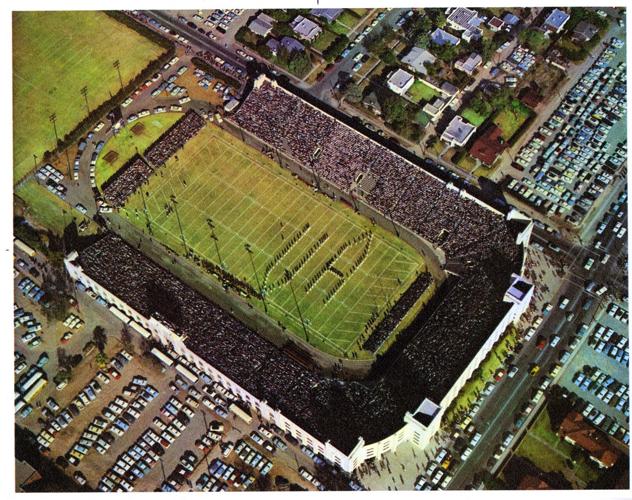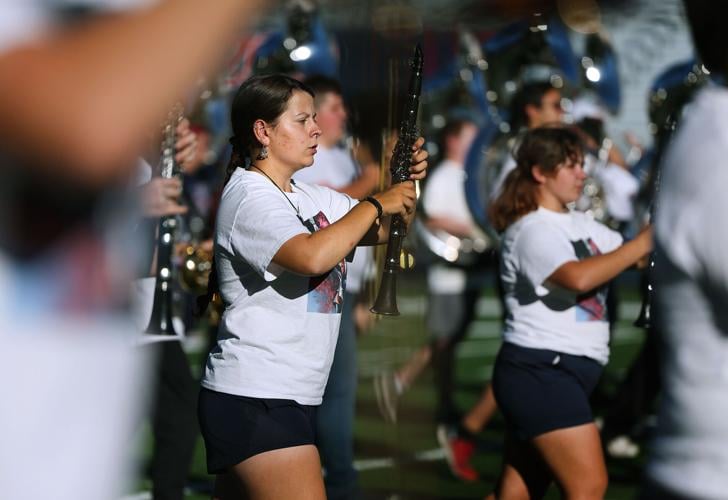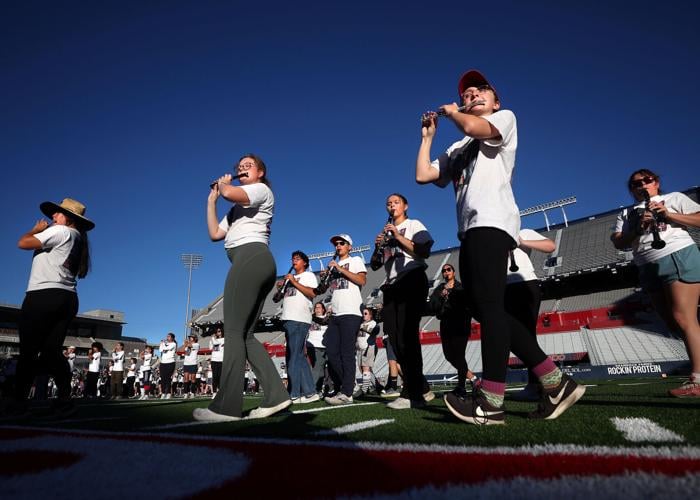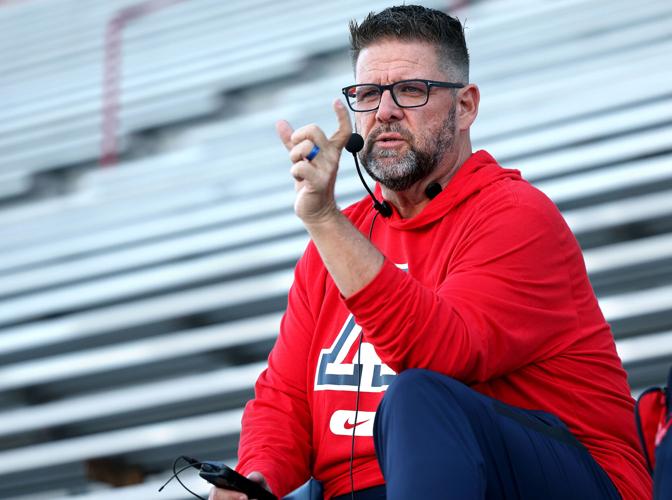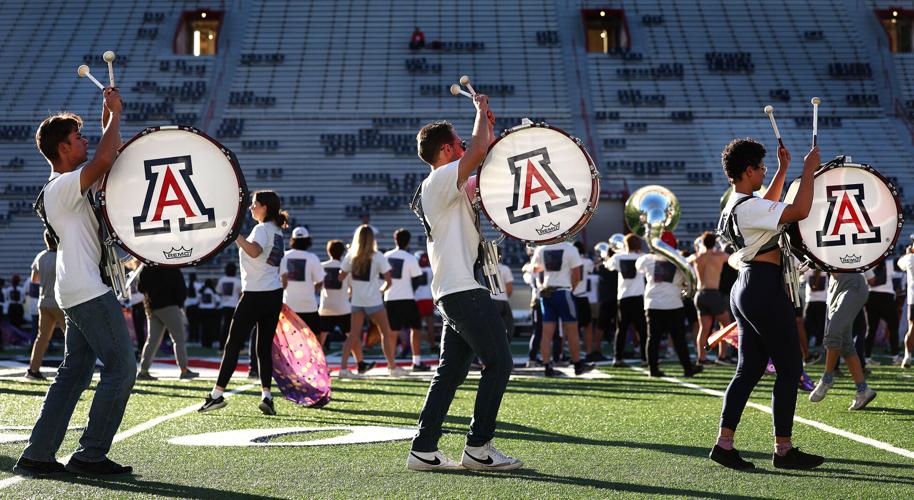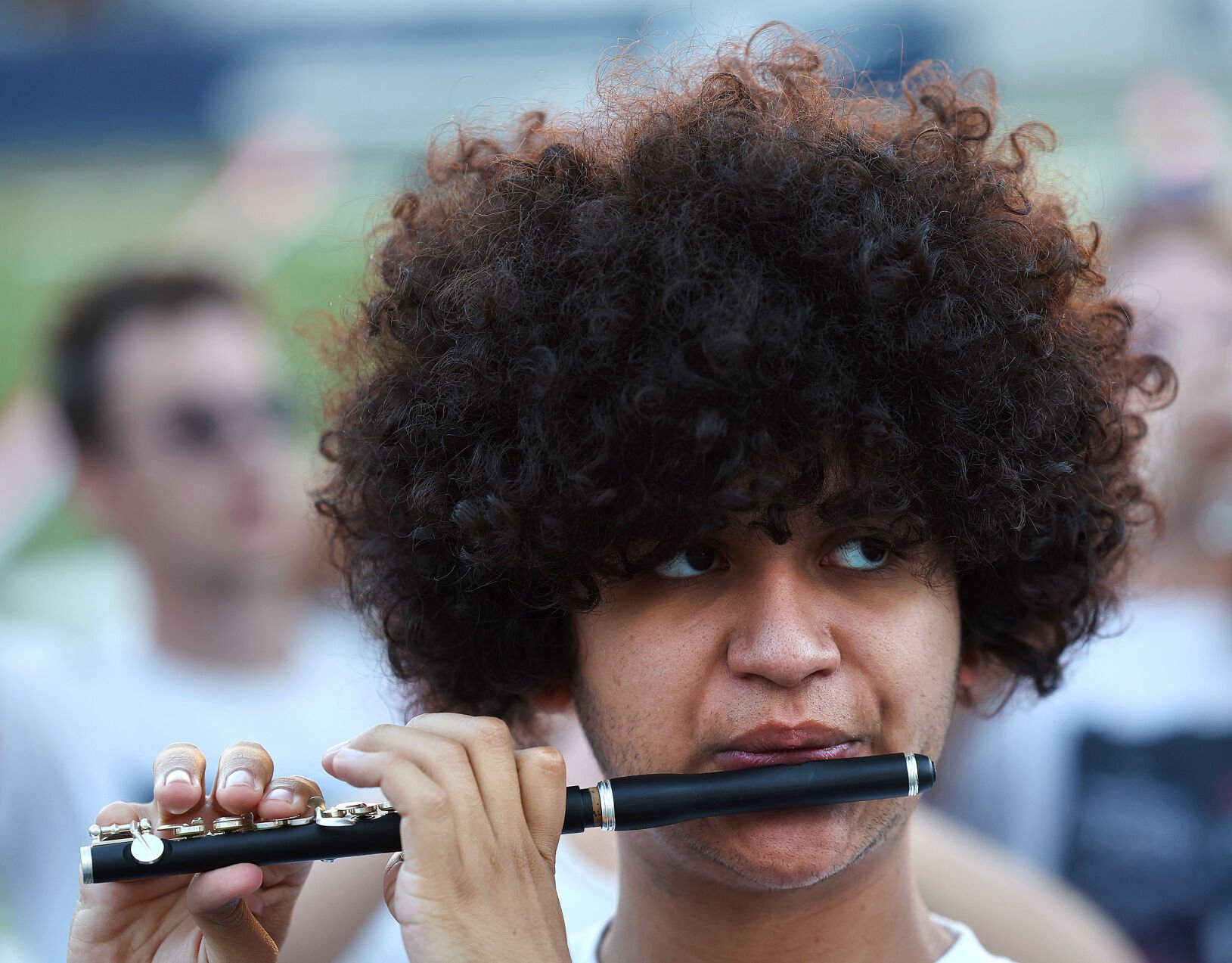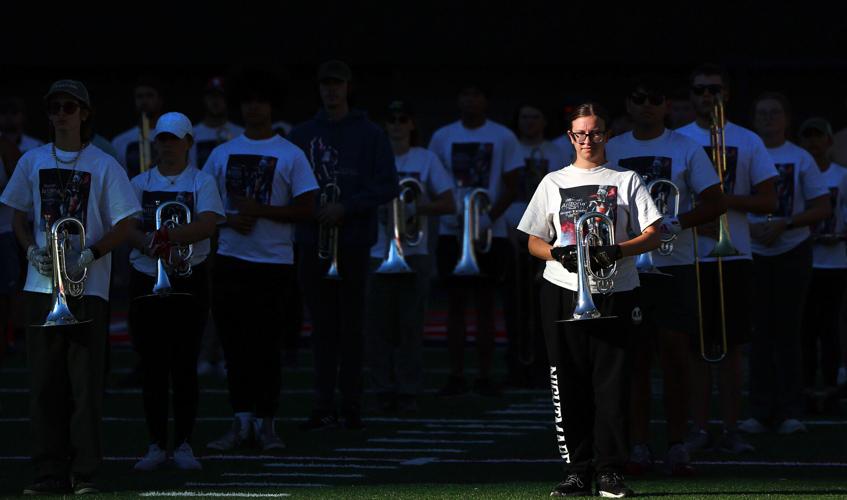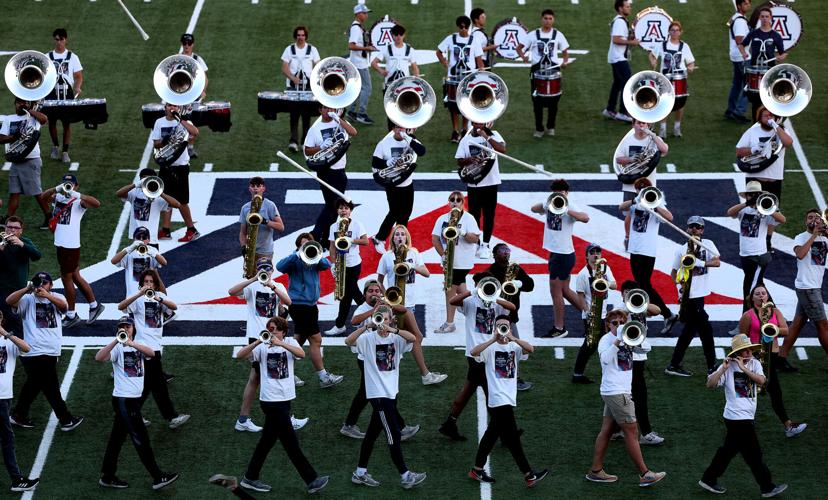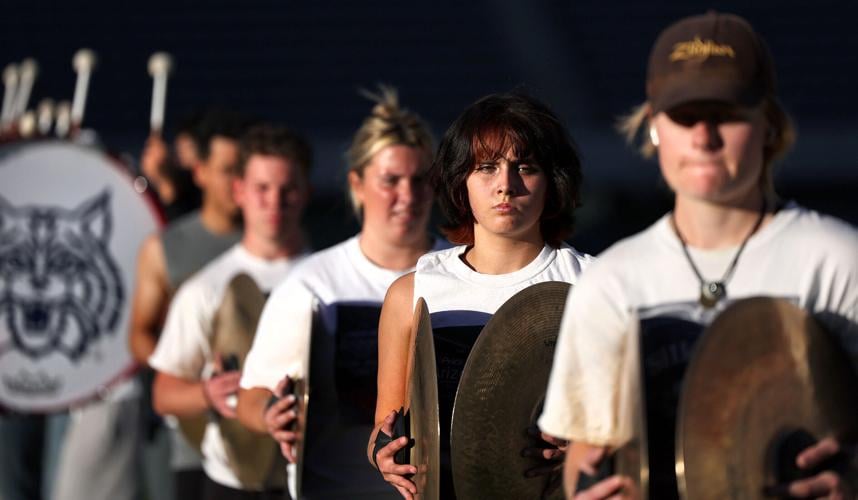Wildcat fans looking for some outstanding play at Arizona Stadium on Friday night should stick around at halftime.
That’s when the Pride of Arizona will officially receive the Sudler Trophy, one of the nation’s most prestigious awards for collegiate marching bands.
“It’s the highest honor that a college band can receive,” said Chad Shoopman, director of athletic bands for the U of A.
The prize has been compared to football’s Heisman Trophy, but it is really more like a Hall of Fame induction for an entire band program, past and present.
According to the John Philip Sousa Foundation, which administers the award, the Sudler Trophy recognizes “collegiate marching bands of particular excellence that have made outstanding contributions to the American way of life.”
The Sousa Foundation announced the U of A as the 2024-26 recipient almost a year ago. The trophy will finally be presented to the Pride of Arizona at halftime of Friday night’s home football game against the University of Houston.

Members of the Pride of Arizona rehearse a Michael Jackson song inside Arizona Stadium in Tucson, Ariz. on November 13, 2024. Tonight at halftime, the Pride of Arizona will receive the Sudler Trophy, a prestigious national award for collegiate bands that has been compared to the Heisman trophy.
Since 2009, the honor has been given every two years to a university-level marching band that “demonstrated the highest of musical standards and innovative marching routines and ideas” and “made important contributions to the advancement of the performance standards of college marching bands over a number of years,” according to the foundation.
The Pride of Arizona is the 34th marching band to receive the trophy — and just the fifth from a school west of the Mississippi River — since the prize was created in 1982 and given annually through 2007.

Members of the University of Arizona marching band pose with their instruments, circa 1903, the year after the band was formed.
A school can only win the award once. Arizona State’s marching band took home the honor in 1991.
“It is my great joy to be able to share this recognition with the school, the college, the university and the Tucson community,” Shoopman said.
Historic march
The Pride of Arizona began more than 120 years ago as a 12-member ROTC band that made its first performance at a battalion parade on Dec. 9, 1902.
The band marched for the first time at an Arizona football game in 1922 and began performing during the Tucson Rodeo and Parade in 1926, an annual tradition that continues today.

Chad Shoopman, director of the University of Arizona’s Pride of Arizona marching band and pep band, sits in the stands at Arizona Stadium and gives feedback to his students during a rehearsal in Tucson, Ariz. on November 13. Tonight at halftime, the Pride of Arizona will receive the Sudler Trophy, a prestigious national award for collegiate bands that has been compared to the Heisman trophy.
The U of A marching band has even had a few direct links to Sousa himself over the years. Joseph DeLuca, a euphonium soloist with Sousa’s band, was hired to be the university’s director of bands in 1928. And in 1956, former Sousa cornet soloist and assistant conductor Frank Simon joined the U of A music faculty and worked closely with the marching band.

The University of Arizona marching band performs at halftime of Super Bowl I at Los Angeles Memorial Collesium on Jan. 15, 1967.
Then there’s this claim to fame, courtesy of the band history that the university submitted for Sudler Trophy consideration: Sometime in the late 1930s or early 1940s, the U of A marching band made history with the debut of its famous “Floating A.” Until then, no college band had ever marched up and down the field while in a formation shaped like its school letter.

An aerial photo, circa 1960, shows the University of Arizona marching band performing during a football game at Arizona Stadium.
More groundbreaking achievements came during the tenure of Jack Lee, the university’s longest-running director of bands, who served from 1952 until 1980 and famously wrote the fight song “Bear Down, Arizona” after seeing the words painted on top of Bear Down Gym.
Under Lee’s leadership, the U of A marching band teamed up with the band from Grambling State University to perform the first-ever Super Bowl halftime show during the championship game between the Green Bay Packers and the Kansas City Chiefs on Jan. 15, 1967.
Almost exactly one decade later, on Jan. 15, 1977, the U of A band took part in the inauguration parade for President Jimmy Carter.
But aside from “Bear Down, Arizona,” arguably Lee’s most lasting legacy is Band Day, the university’s annual high school marching band contest, which began in 1954 and has grown into what Shoopman called “one of the biggest band competitions in the country.”
Photos: Pride of Arizona wins Sudler Trophy
The Pride of Arizona has won the Sudler Trophy, a prestigious national award for collegiate bands that has been compared to the Heisman trophy. Bands can only receive the trophy once.
This year’s day-long event, held Nov. 2 at Arizona Stadium, drew 47 high school bands from around the state and a crowd of more than 15,000 people.
It was Lee’s successor, director of bands James Keene, who saw the Pride of Arizona adopted as the marching band’s official nickname in 1980. It was director of bands Jay Rees who steered the program into using alternative rock music in its halftime shows, resulting in at least one viral video, some international media attention and positive reviews from the members of such featured bands as Radiohead and the Talking Heads.
Rees’ efforts to create “the World’s First Alternative Music Marching Band” also helped the Pride of Arizona land a Nike commercial and a musical collaboration with video game maker EA Sports. And it eventually led to the magical sight of uniformed marching band members in skeleton facepaint, performing on stage at the Rialto Theatre with the critically acclaimed Tucson band Calexico as part of the annual All Souls Procession.
Banding together
Since Shoopman became director of bands in 2016, he said he has worked to turn the word Pride into an acronym for Performance, Respect, Integrity, Discipline and Excellence.
The band has also scored a viral hit under his direction, when its 2019 tribute to the rock band No Doubt drew online praise from lead singer Gwen Stefani herself.
This year’s edition of the Pride of Arizona is the largest in school history, with 290 members, including musicians, the twirling team, the color guard and the pom line.
Shoopman said the marching band is one of the most diverse groups on campus, with students from more than 100 different academic majors represented. Everyone is basically a walk-on, he said, and “less than 10 percent are music majors.”
Pride season starts before the first day of classes with what Shoopman described as “a crucible”: a week-long Band Camp, during which members rehearse and drill from 8 a.m. to 10 p.m. each day.
After that, the band practices three or sometimes four times a week for roughly three hours at a time. And that’s not counting the film sessions Shoopman holds immediately after home games so they can review their work and he can hand out awards and autographed game balls to the top performers.
“I want our students to have an experience that stays with them the rest of their lives,” he said.
On Thursday night, Shoopman was scheduled to host a Pride of Arizona alumni reception and dinner to celebrate the Sudler Trophy. More than 200 people were expected to attend, including past band directors and their family members, as well as representatives from the Sousa Foundation and the Sudler family, which endows the award and other foundation initiatives.
Though the Sudler Trophy is a recognition of the band’s accomplishments across generations, Shoopman said he feels a special connection to it, given his background.
He grew up in Tucson and graduated from Canyon Del Oro High School, where he performed with the Dorados’ award-winning marching band. After that, he spent four years as a member of the Pride of Arizona, including two years as drum major, while he earned his bachelor’s degree in music education in 1996.
Then, he stayed on at the university to earn a master’s degree in conducting performance while working as a graduate assistant for the marching band, a role that took him to the NCAA basketball tournament in 1997, the year the Wildcats won the national championship.
Now, the Pride of Arizona has a fancy new trophy of its own.
“It's just so meaningful to me personally to be the man in the chair when it happened,” Shoopman said.


